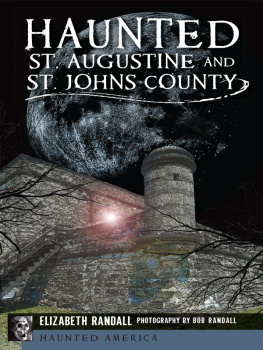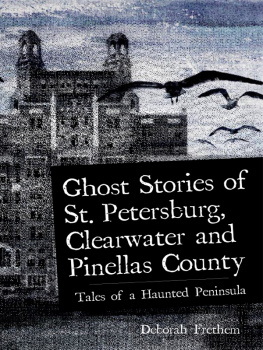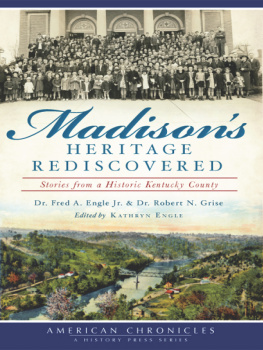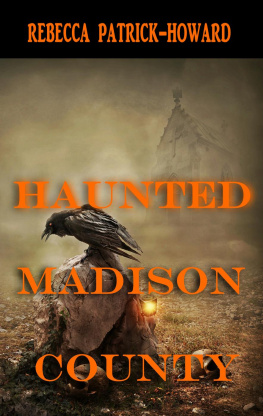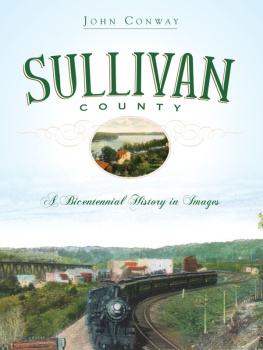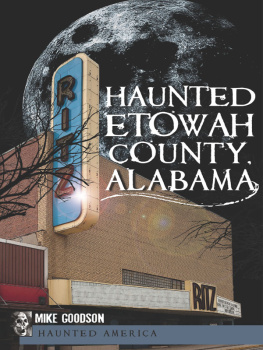
Published by Haunted America
A Division of The History Press
Charleston, SC 29403
www.historypress.net
Copyright 2013 by Elizabeth Randall
All rights reserved
First published 2013
e-book edition 2013
Manufactured in the United States
ISBN 978.1.62584.702.7
Library of Congress Cataloging-in-Publication Data
Randall, Elizabeth, 1954
Haunted St. Augustine and St. Johns County / Elizabeth Randall ; photographs by Bob Randall.
pages cm
Includes bibliographical references.
print edition ISBN 978-1-62619-226-3 (paperback)
1. Ghosts--Florida--Saint Augustine--Anecdotes. 2. Ghosts--Florida--Saint Johns County--Anecdotes. 3. Haunted places--Florida--Saint Augustine--Anecdotes.. 4. Haunted places--Florida--Saint Johns County--Anecdotes. 5. Parapsychology--Florida--Saint Augustine--Anecdotes. 6. Parapsychology--Florida--Saint Johns County--Anecdotes. 7. Saint Augustine (Fla.)--Social life and customs--Anecdotes. 8. Saint Johns County (Fla.)--Social life and customs--Anecdotes. I. Randall, Bob (Photojournalist) II. Title. III. Title: Haunted Saint Augustine and Saint Johns County.
BF1472.U6R355 2013
133.10975918--dc23
2013029707
Notice: The information in this book is true and complete to the best of our knowledge. It is offered without guarantee on the part of the author or The History Press. The author and The History Press disclaim all liability in connection with the use of this book.
All rights reserved. No part of this book may be reproduced or transmitted in any form whatsoever without prior written permission from the publisher except in the case of brief quotations embodied in critical articles and reviews.
To our brave grandmothers, Sylvia Marilyn Peterson and Elsie Robinson Farleytwo pioneering spirits whom we would love to see again.
It is wonderful that five thousand years have now elapsed since the creation of the world, and still it is undecided whether or not there has ever been an instance of the spirit of any person appearing after death. All argument is against it; but all belief is for it.
Samuel Johnson, from The Life of Samuel Johnson by James Boswell
CONTENTS
FOREWORD
When Elizabeth Randall first asked me to write a foreword for her book about ghost stories, I admit there was a bit of hesitation. After all, nature and sense of place are more my thing as an author and as a longtime Floridian simply trying to figure out what this wacky and gorgeous and wildly misunderstood state is really about.
But Elizabeth is one of the most accomplished and clever writers I know. I immersed myself into Haunted St. Augustine and St. Johns County and rode with its current. When I surfaced, I had a grin on my face and a renewed sense of assurance that Florida is still one of the most singular places in all the world.
As Elizabeth has discovered, this authentically offbeat county is far more than a mood-setting backdrop for novels and films or any mainstream hype promoting theme parks and shopping malls.
Indeed, as most students of the real Florida know, the so-called Sunshine State is just about anything we imagine it to be. So, why not launch a wondrous and droll journey into old Floridas rich culture of supernatural lore?
Within this context, St. Johns Countyhome to some of our most historic settlementsis a perfectly sensible place to base a quest for our subtropical ghosts, as well as all the cold spots, chilling mists and floating orbs of protoplasm that reportedly travel with them.
Elizabeth, who readily admits to being a ghost agnostic, gamely forges ahead into an excursion she promises will be far more organic than the staged repetition of Disneys Haunted Mansion ride. In doing so, she picks up the thread others have trailed through their own stories of the supernatural herefrom the unicorn once spotted on the shores of the St. Johns River in the sixteenth century to the Gothic myths tilled by Stetson Kennedy and others in the Works Progress Administration Florida Writers Project earlier in the twentieth century.
In this way, Haunted St. Augustine might fit into the genre of surrealism that so often inhabits the memories, dreams and reflections of our art and literaturea model that creatively seeks freedom from excessive rational thought. Tired of mind-numbing work behind a counter or in a cubicle? Kick back and let the spirits romp about and liven up your world for a bit.
Come along with Elizabethand husband photographer Bobas they meander down this ephemeral trail of ghosts. The first thing youll notice is that St. Johns County seems to be actively haunted. As Elizabeth has found, its no longer enough to advertise places as simply historic or old, as St. Augustine has done for years. She observes, Theres been a distinctive shift in the tourist market from places to see that are the oldest to places that are the most haunted. In St. Augustine, there are no less than a dozen tours themed to haunting, and theres also plenty of ghost-sleuthing accessories that can be used along the way. At one of the ghost hunting kiosks, Elizabeth finds a ghost gadget used to detect cold spots left by protoplasm that looked amazingly like the stud-finder in Bobs toolbox at home.
Nonetheless, Elizabeth gifts each storywhich is first recounted in the words of a local true believerample room for expression. Every tale is also accompanied by a very real history, and it is her careful recounting of that history that informs the respective stories with a wonderful Faulknerian texture. This is no less powerful than the classic nature-shape-place dynamic; its just a bit morecreative.
As with UFOs, visitors to this ghostly shadow land are either true believers or not. But even a ghost agnostic like Elizabeth admits to being puzzled at times. During her visit to a St. Augustine antique shop that had once been a jail and drunk tank for prisoners a few centuries ago, she is told that Pedro, the resident ghost, once darted out to catch a modern light bulb before it fell to the floor. She wonders how an inebriated ghost could be that nimble.
In this way, Haunted St. Augustine helps chart some delicious new territory in the realm of what might rightly be called the genre of Florida-Phantom-Heritage travel.
Bill Belleville
June 2013
PREFACE
Wits describe Florida as the Rodney Dangerfield of the South. We get no respect. Our biggest claims to fame on a national scale are hanging chads and Casey Anthony. With education budgets shrinking, the housing market imploding and unemployment rising, we are no longer viewed as Ponce de Leons desirable land of flowers. Florida, in general, is viewed as the proverbial country cousin who was transformed by slick city developers with long, low cars and bags of moolahnot into Cinderella, but rather more like one of her stepsisters with lots of plastic surgery. Theres plenty of smooth, stinky asphalt in place of dust, mud and toe-stubbers. The reeking mounds of landfills replace the bouquet of orange groves. The compressed years of meandering sameness, of livestock and impenetrable woodland, gone, exploded into a hurricane of shopping malls and theme parks.
Florida may be all of this to outsiders, but to the people who live here, it is altogether different. Bob and I have lived in Florida a combined total of seventy-one years. Were not natives, as few people in Florida are, but we are Floridians in the truest sense of a situational shift. We have seen Florida past and present, north and west, east and south, its swamps, its woods, its white-top beaches and its grassy waters. We have traveled the highways and byways, the sand, the muck, the cracked tarmac and the wet roads as glossy as glass gashed on either side by canals or by miles upon miles of telephone poles, rail fences and livestock munching dark blades of grass against a blood-red sunset. We have baked under its fierce sun when the air was heavy with the fragrance of magnolia and honeysuckle, we have wandered under filigree Spanish moss hanging from centurion trees and we have emerged from the ashes of the roiling fires of its sugar cane tracts. We have hunkered down in safe rooms from its mighty storms and sailed, canoed and kayaked on glittering water under immense bridges linking islands made of coral and coquina. Florida is not scenery, a backdrop or a stage for those of us who stay, and it is big enough to combine land and sea, city and country into a peninsular patchwork that is at once impenetrable and enigmatic. Florida becomes who we are and who we want to be.
Next page
